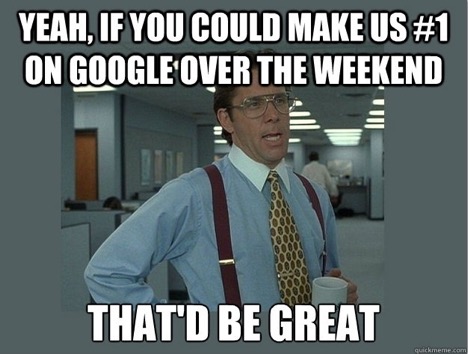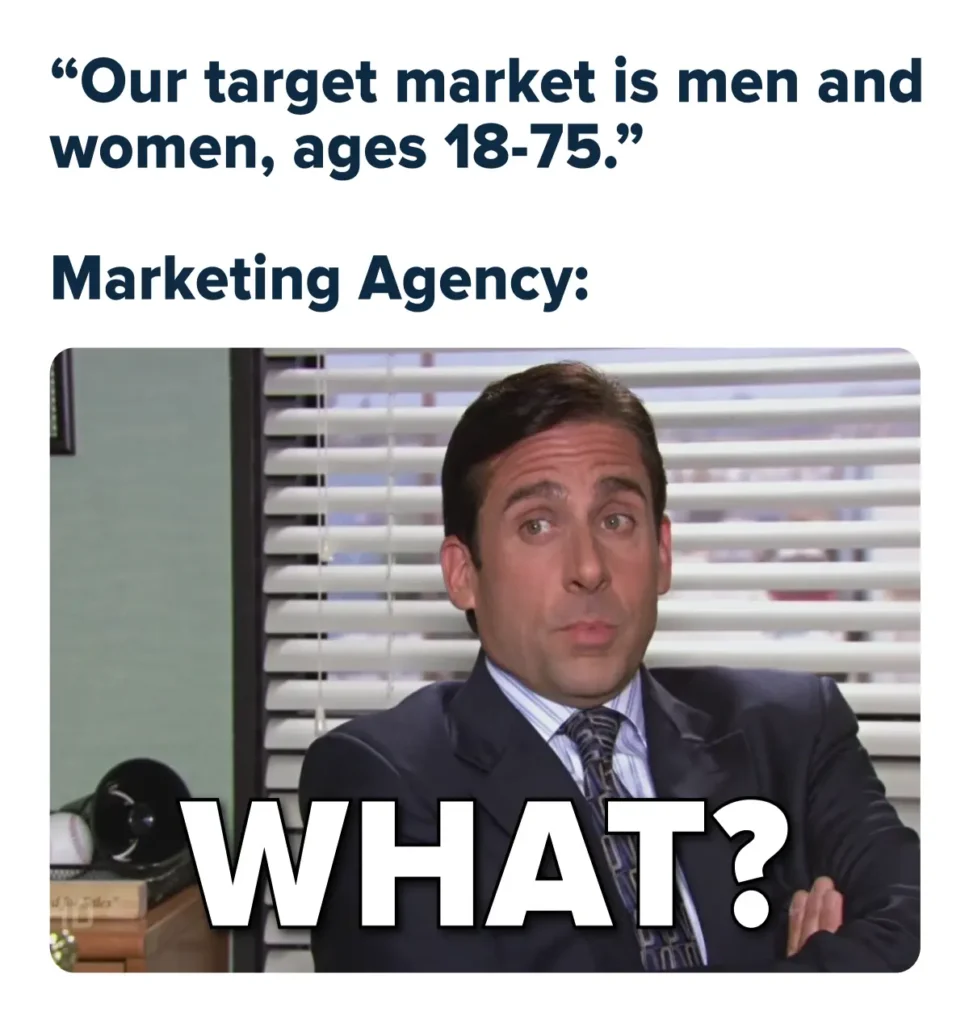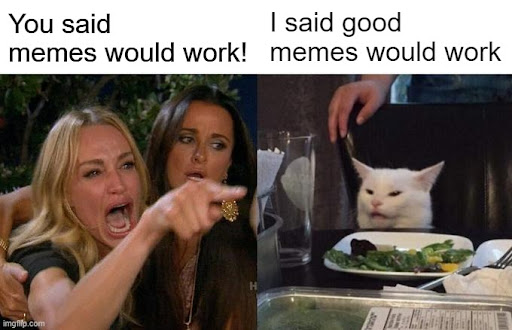As a growth marketing manager, I’ve noticed an intriguing trend that increasingly captivates my attention on LinkedIn: the strategic use of memes by companies.

These aren’t just any memes; they’re cleverly crafted pieces of content, designed not only to catch my eye but also to entice me to read their messages, click through, and explore their offerings.
This phenomenon creates a unique bridge between brands and their target audiences, including myself.
I’ll be frank with you, dear reader, I’m not a pro of Linkedin and I’m even less a pro of meme marketing. That’s why, as I was checking some comments on my last lovely Saturday afternoon (doing Linkedin on week-ends, gosh…), I discovered one of these memes and immediately got the idea to dig it up a bit.
So, let’s focus and examine how something as seemingly simple as a meme can significantly impact our marketing strategies and audience engagement 🙂
Anatomy of a Meme
A meme, in its simplest form, is a unit of cultural information that spreads from person to person. But what are the critical elements that constitute a successful marketing meme, exactly?
- Humor: The backbone of any meme is its humor. It’s the initial hook that grabs attention. In a professional setting like LinkedIn, humor must be balanced with taste and relevance to the audience. I’ve observed that the most effective memes are those that resonate with the shared experiences of professionals, offering a light-hearted take on common industry challenges or stereotypes.
- Simplicity: A meme’s message must be immediately clear. As a marketing target, I’ve found that the most impactful memes are straightforward, requiring no additional context to understand. This simplicity ensures that the message is accessible to a wide audience, regardless of their background or the speed of their scroll through their feed.
- Relatability: For a meme to resonate, it must speak to a shared experience or emotion. In the realm of LinkedIn, memes that reflect the nuances of professional life, work challenges, or industry-specific humor tend to engage me the most. This relatability fosters a sense of community and connection between the brand and its audience.

- Visual Appeal: The visual element of a meme is crucial. It’s about how the text interacts with it to create meaning. Memes that use visuals creatively, whether through juxtaposition, exaggeration, or reference to popular culture, stand out and are more likely to be remembered and shared.
- Timeliness: A meme’s relevance to current trends, news, or cultural phenomena can significantly enhance its effectiveness. I’ve noticed that memes responding to recent events or tapping into trending conversations on LinkedIn capture more attention, demonstrating the brand’s awareness and engagement with the wider world.
Pros and Cons
Even if I’ve never used it myself… The more I read about meme marketing, the more I think integrating it into a brand’s strategy is a double-edged sword. Of course it’s a dynamic and innovative approach that can significantly amplify a brand’s digital presence, yet it requires a careful balance to avoid potential pitfalls.
I’ve just taken a pen and paper and found some pros and cons about it… It’s not a big deal, really… I’m sure you would have found the same conclusions but let me detail them:
Pros
- Cost-Effectiveness: One of the most compelling advantages of meme marketing is its cost-efficiency. Creating a meme often requires less financial investment than traditional marketing materials, yet it can achieve substantial organic reach and engagement. You don”t even need to use generative AI picture tools. Just take what already exist!
- Enhanced Engagement and Reach: Memes inherently encourage interaction. Their humorous and relatable nature prompts shares, likes, and comments, significantly extending a brand’s reach. I’ve witnessed firsthand how a well-crafted meme can spark conversations and foster a sense of community among professionals on LinkedIn, making the brand more memorable and engaging.
- Showcasing Brand Personality: Memes offer a unique opportunity to convey a brand’s personality and values in a way that’s both entertaining and accessible. Through memes, I’ve seen high tech “I don’t understand what your solution is doing” companies being able to present brands in a more human and relatable light, breaking down the formal barriers often associated with business-to-business communication.

Cons
- Sensitivity and Appropriateness: The humorous nature of memes can sometimes backfire if not properly aligned with the audience’s values or the current social climate. There’s a fine line between funny and offensive, and crossing it can lead to backlash. You never know who’s gonna see your pic!
- Short Lifespan: The internet is fickle, and today’s viral sensation can quickly become tomorrow’s forgotten news. Memes, in particular, have a short shelf life. They require timely execution and relevance to current trends.
- Risk of Misinterpretation: The simplicity of memes is both a strength and a weakness. While they can convey messages quickly, they also leave room for misinterpretation.
- Legal Considerations: Navigating copyright issues is another challenge. The use of popular images or references in memes can lead to copyright infringement issues.
I know that most companies will never consider meme marketing as a potential tool due to its perceived lack of seriousness. Some will stick to their brand guidelines, staying as professional as they can, targeting professional accounts with content and ads that reflect this ethos. The conventional path, paved with traditional ads, polished posts, and meticulously crafted messages, has its merits, undoubtedly. But in an era where attention is the new currency and budgets are increasingly scrutinized, could meme marketing offer an alternative for those willing to tread a more unconventional path?
The essence of meme marketing lies not in abandoning professionalism but in humanizing brands, making them more relatable and engaging to their audience. Yes, there’s a fine line to tread, and not every brand’s identity or audience will align with the informality and spontaneity of memes. However, for those who find a resonance with this approach, the potential rewards in terms of engagement, reach, and community building are significant. As budgets tighten, and the digital landscape becomes ever more crowded, the creativity, flexibility, and cost-effectiveness of meme marketing could indeed provide a compelling solution for certain campaigns.

I invite you to consider the possibilities that meme marketing holds, not as a wholesale replacement for traditional strategies but as a complementary approach that can add depth and dynamism to your marketing mix. And who knows? With the right meme, at the right time, you might just capture the imagination of your audience in a way that no conventional ad ever could.
I’d love to hear from you now. Have you come across any marketing memes that struck a chord, made you laugh, or even made you click? And if you don’t comment, make us laugh by sharing your favorite (marketing if possible) meme in the comments below.

Comments